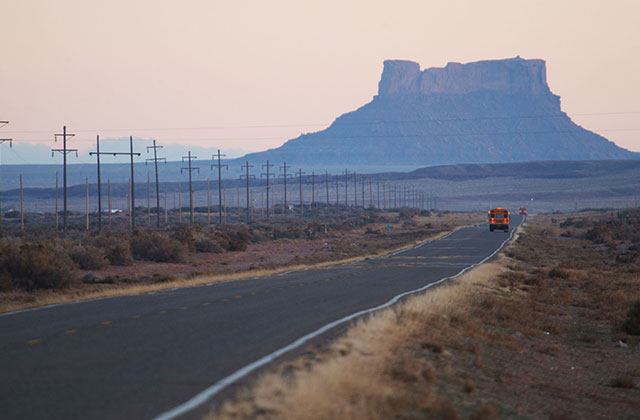Arizona’s Canyon Mine, just six miles south of the Grand Canyon, filled with water over the winter, and the Sierra Club and Navajo Nation are now accusing the uranium mine owner of not properly disposing the contaminated water.
In a statement released Monday (March 20), the Sierra Club said that Energy Fuels Resources Inc. violated the plan of operations submitted to the U.S. Department of Agriculture Forest Service in 1986, which requires that excess water be put in holding ponds and treated on-site.
Instead, the company transported the contaminated water through Navajo land to the White Mesa Mill uranium processing facility to then spray the water into the air and onto the Kaibab National Forest to try evaporating it. Energy Fuels did not notify any Navajo communities that it was transporting the water, and the Nation restricts the transport of such materials.
A company spokesperson told The Arizona Daily Sun that it took this action to avoid the ponds from overflowing onsite. The water’s uranium concentrations measure about 0.09 parts per million, three times the federal drinking water standard. The Forest Service had approved the company’s current methods though, confirmed the Sun, even if it departs from the initial plan. There are "restrictions to ensure water from the mine is not being sprayed onto the national forest," per the Sun.
“This is another prime example of environmental racism, to allow unregulated transport of radioactive liquids in unmarked trucks through communities and without notifying the public or any of the surrounding indigenous nations,” said Leona Morgan of Haul No!, an indigenous-led initiative concerned about uranium transport, in a statement.
The Navajo Nation’s worries went beyond the trip however, per the Sierra Club:
Indigenous peoples are not just concerned about the transport, but also Red Butte, a designated Traditional Cultural Property and sacred site, near the mine, as well as risks to precious water resources, possibility of accidents, lack of emergency response, and impacts to human health, plants, and wildlife.
The mine has yet to begin operations, but already faced criticisms from the Navajo based on their historic experiences with uranium mines. From 1944 to 1986, the Nation dealt with dramatic extraction under its lands with nearly 30 million tons of uranium ore taken, according to the EPA. Over 500 mines were abandoned, which resulted in a federal cleanup effort to ensure contamination doesn’t further impact their homes and drinking water, which already shows elevated levels of radiation.
“As Navajo Nation, we have dealt with uranium since the cold war and still dealing with mines left behind by irresponsible people,” said Milton Tso, Navajo Cameron chapter president, in the release. “The last thing we need is for another mine transferring it through our communities.”
